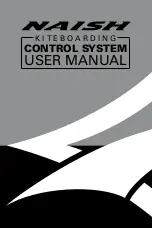
AIRCRAFT OPERATING INSTRUCTIONS – VIRUS 912 S-LSA GLIDER
Page
39
With wheel brakes engaged and control stick in full back position, first set engine power to 4000
RPM in order to perform the ignition check. Set the ignition switches OFF and back ON one by
one to verify RPM drop of not more than 300 RPM. When the ignition check has been completed,
add full power (throttle lever full forward) and monitor engine’s RPM. Make sure they range
between maximum recommended and maximum allowable RPM limits.
NOTE:
The engine should not reach 5800 RPM on the ground. Engines are factory set to reach
maximum ground RPM of 5300 - 5500 at sea level at 68° F. Maximum ground RPM may vary
depending on the season and service elevation.
CAUTION!
Should engine’s RPM be lower than the recommended on ground amount (min. 5100
RPM) or in excess of maximum allowable RPM on ground (5800) during this maneuver, check
engine and wiring for correct installation.
Taxi
Release parking brake. Taxing technique does not differ from other aircraft equipped with a
steerable nose wheel. Prior to taxiing it is essential to check wheel brakes for proper braking
action. In the case you expect o taxi a long way, take engine warm-up time into account and
begin taxiing immediately after engine start-up. Warm-up the engine during taxi so as not to
cause engine overheating because of prolonged ground operation.
Holding point
Make sure the temperatures at full power range are within operational limits. Make sure the
safety harnesses are fastened and doors closed and secured at all three closing points. Set flaps
to 2nd position (flap handle full up). Power reduced to idle.
CAUTION!
Should the engine start to overheat because of long taxi and holding, shut down the
engine and wait for the engine temperatures drop to reasonable values. If possible, point the
aircraft’s nose into the wind. This will provide radiators with airflow to cool down the engine
faster.
9.2 Servicing
.
Tie down
Point the aircraft into the wind and retract flaps fully. Chock all three wheels. Remove the caps
covering mounting holes on the bottom part of the wing (located 15 ft from the fuselage) and
carefully screw in the two screw-in rings provided. Secure tie-down ropes to the wing tie-down
rings at an approximately 45-degree angle to the ground. When using rope of a non-synthetic
material, leave sufficient slack to avoid damage to the aircraft, should the ropes contract. To tie
down the tail, tie a rope through the tail skid and secure it to the ground. At the end, cover the
pitot tube with a protection cover.
Draining and refueling








































